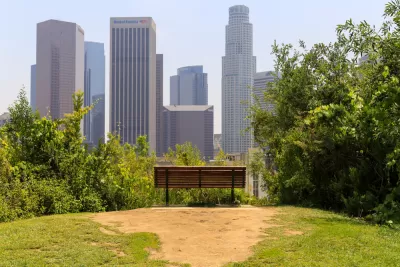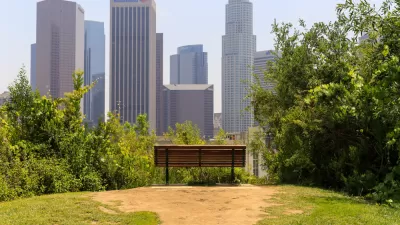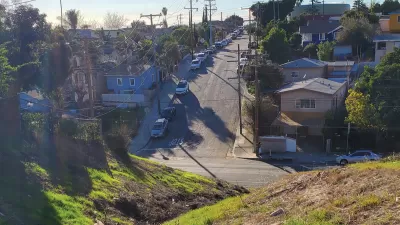This approach makes sense because parks are not isolated spaces, and park planning cannot be done effectively or holistically without considering the social, economic, physical, and political context in which parks are located.

Have you heard of "intersectional planning" as it relates to parks and recreation? Essentially, the term refers to "the integration between planning for green spaces and for other elements, such as transportation, housing, and water management," and is an approach that recognizes "parks and open space as closely connected with their neighborhoods and rely on community-driven plans to meet the diverse needs of stakeholders" (Jennings, et al. 2019).
In this article, Los Angeles County planner Clement Lau argues that park planners must think beyond park boundaries, see the big picture, and plan with interconnections in mind. Specifically, Lau focuses on the unincorporated community of West Athens-Westmont and explains how planning for parks relates to other quality of life issues like safety, land use, and transportation which affect how and whether residents travel to and use existing and future parks. This important work ties in with the 10-Minute Walk Campaign, which is a nationwide movement to ensure that everyone has safe access to a quality park within a 10-minute walk and is explained in a previous post, "A 10-Minute Walk to A Park for Your Health and Well-Being." For an overview of park planning and implementation efforts in West Athens-Westmont, also check out this video.
Reference:
Jennings V, Browning M, Rigolon, A (2019) Urban Green Spaces: Public Health and Sustainability in the United States. Springer, Switzerland.
FULL STORY: An Intentional Collision: An intersectional approach to park planning

Maui's Vacation Rental Debate Turns Ugly
Verbal attacks, misinformation campaigns and fistfights plague a high-stakes debate to convert thousands of vacation rentals into long-term housing.

Planetizen Federal Action Tracker
A weekly monitor of how Trump’s orders and actions are impacting planners and planning in America.

In Urban Planning, AI Prompting Could be the New Design Thinking
Creativity has long been key to great urban design. What if we see AI as our new creative partner?

King County Supportive Housing Program Offers Hope for Unhoused Residents
The county is taking a ‘Housing First’ approach that prioritizes getting people into housing, then offering wraparound supportive services.

Researchers Use AI to Get Clearer Picture of US Housing
Analysts are using artificial intelligence to supercharge their research by allowing them to comb through data faster. Though these AI tools can be error prone, they save time and housing researchers are optimistic about the future.

Making Shared Micromobility More Inclusive
Cities and shared mobility system operators can do more to include people with disabilities in planning and operations, per a new report.
Urban Design for Planners 1: Software Tools
This six-course series explores essential urban design concepts using open source software and equips planners with the tools they need to participate fully in the urban design process.
Planning for Universal Design
Learn the tools for implementing Universal Design in planning regulations.
planning NEXT
Appalachian Highlands Housing Partners
Mpact (founded as Rail~Volution)
City of Camden Redevelopment Agency
City of Astoria
City of Portland
City of Laramie





























